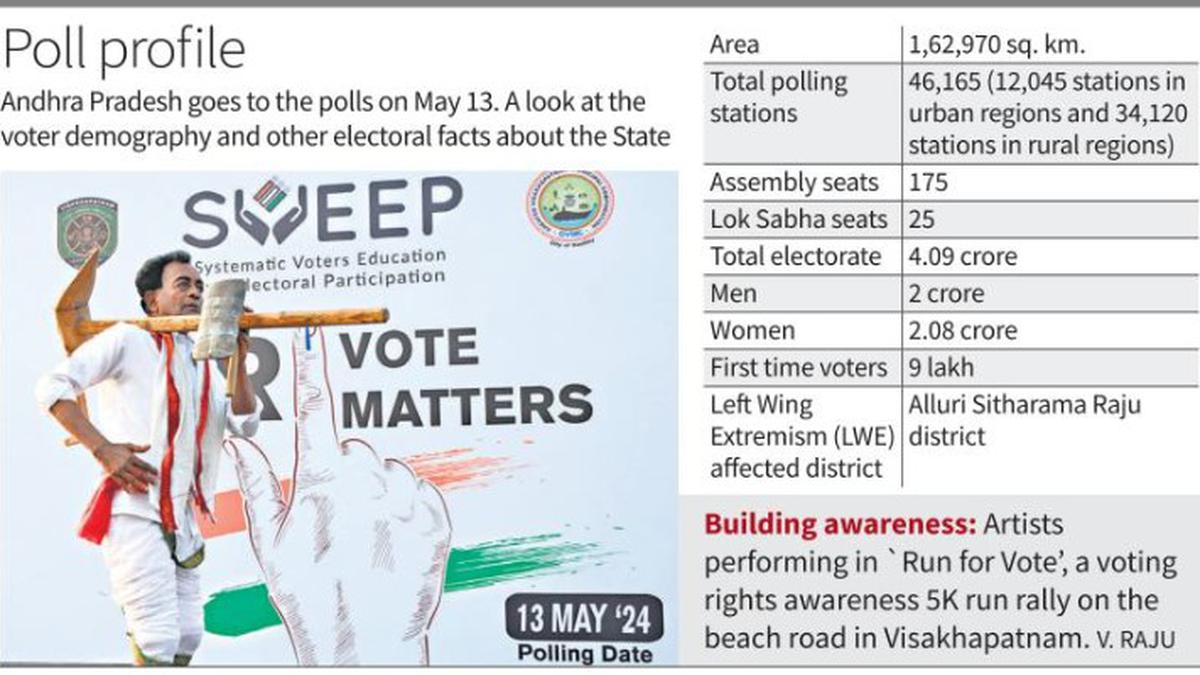
It’s a do-or-die battle for all main players in Andhra Pradesh
The Hindu
The simultaneous Assembly and Lok Sabha election to be held in Andhra Pradesh on May 13 is being called the “mother of all elections”
The simultaneous Assembly and Lok Sabha election to be held in Andhra Pradesh on May 13 is being called the “mother of all elections”, with a mix of revenge politics, alliance dynamics, family drama, populist welfare schemes and the evergreen caste factor adding spice to the contest.
It’s a do-or-die battle for most major players in the State, including the ruling YSR Congress as well as the Telegu Desam Party (TDP) and Jana Sena Party (JSP), both constituents of the BJP-led National Democratic Alliance (NDA). For any of these regional parties, unlike for the BJP, it will be hard to sustain themselves in the Opposition for the next five years. The Congress is eyeing a nascent revival and hopes to play spoiler in some areas.
The fight is evenly poised between the two main opponents. There is some anti-incumbency against the YSR Congress and voter turnout will be a key factor. While the YSR Congress appears to have an edge in rural and tribal areas due to its welfare initiatives, the NDA seems to be doing better in the urban segments.
Since Telangana was carved out of united Andhra Pradesh, the residual State of A.P. has been left with 25 Lok Sabha seats, each of which is being keenly contested between the YSR Congress and the NDA. Chief Minister Jagan Mohan Reddy has converted each of these Parliamentary constituencies into a district, applying the principle of decentralisation. Earlier, there were only 13 districts in the State.
In the first decades since its inception, Andhra Pradesh was predominantly a Congress-ruled state. However, after the launch of the TDP by matinee idol N.T. Rama Rao in 1984, the power centre shifted towards the regional party, which is said to have one of the largest cadre bases among the regional outfits in India.
The Congress and the TDP have fought pitched electoral battles in the past, with the reins of power flipping between the two. However, this election promises to be a singularly high-octane contest; it will not be easy for the NDA to breach Mr. Jagan Reddy’s citadel, which is fortified by his government’s welfare schemes, but it’s a matter of political survival for the TDP’s N. Chandrababu Naidu and his party.
In 2014, immediately after the bifurcation of the State, the TDP had joined hands with the BJP and the JSP to fight the YSR Congress, which was then making its electoral debut. Mr. Naidu won that election, with the TDP snagging 102 out of 175 Assembly seats, while its alliance partner, the BJP, won four seats. The JSP did not join the poll fray, though it lent outside support. Mr. Jagan Reddy made an impressive debut with about 70 seats. In the Lok Sabha as well, the TDP-led alliance won 16 seats, leaving nine for the YSR Congress.













